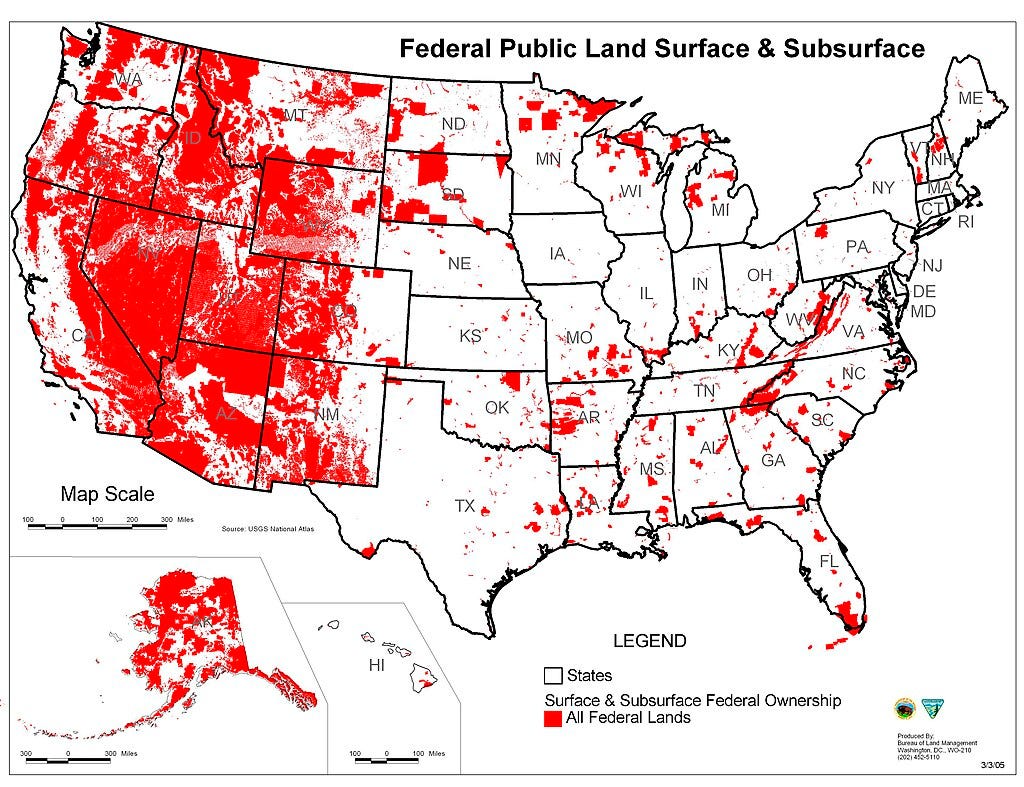President Trump’s actions to pause offshore wind leases and solar development on federal lands is a disappointing detour from the administration’s otherwise promising energy policies. It adds new layers of bureaucracy to federal lands—exactly where permitting is already a nightmare—rather than cutting through the red tape that’s stifling energy abundance.
The reality is simple. A “Drill, baby, drill” ethos does not go far enough. Instead, we need a mindset of “Build, baby, build.”
There’s massive potential on federal lands for all sorts of energy development. Mining for valuable materials, extracting gas and oil, building new nuclear plants, putting up wind installations, developing geothermal energy, and turning patches of land into solar-generating powerhouses are all possible.
Yet energy developers often write off federal lands. Take a recent report on the potential for off-grid data centers. The analysts find more than 1,200 GW of potential in the US Southwest by pairing solar, storage, and gas backup systems. For context, this is much more than the load growth projections indicate is likely, even with a large AI boom.
Despite the ample resources, one of their conditions for filtering out likely development sites is to remove all federal lands. Why? It’s too hard to build there. Just look at the numbers—the National Renewable Energy Laboratory estimates that only 4% of utility-scale renewables (solar, wind, and geothermal) are on federal lands compared to 12% of oil drilling.
If you ask would-be builders about this, they’ll cite endless delays, duplicative reviews, and litigation risks as reasons they avoid federal lands despite their potential. Poor federal rules keep large portions of the country on the sidelines.
Geothermal faces a special permitting challenge here. Federal lands host much of the resource’s potential. Without better rules, the industry will struggle to get off the ground. That’s part of why the Department of Interior, the Bureau of Land Management, and various members of Congress have worked on streamlining federal permitting for geothermal.

Like geothermal, solar energy has immense potential on federal lands, particularly in the solar-rich West. There’s an opportunity for energy development. Solar costs have plummeted, and regions of Nevada, Utah, Arizona, and New Mexico are ripe for large-scale projects. Instead of making it harder to tap into these resources, we should fast-track projects, streamline permitting, and eliminate red tape.
Energy abundance is the right north star
At a fundamental level, the Trump administration’s embrace of energy dominance and abundance is promising. This goal holds broad appeal because it taps into something essential: the need to build. Our central challenge in energy policy is the inability to expand generation. We worry about load growth almost purely because we make building so difficult.
Energy abundance won’t arise by playing favorites in DC. It happens by unleashing the creativity of millions of builders. An administration poised to (rightly) dispense with the extreme interpretations of climate models need not throw out entire energy technologies as well. After all, the pro-mining and mineral development aspects of President Trump’s recent executive orders pair well with the continued success of the solar industry since panels include several rare earth minerals.
A future that includes solar and wind alongside oil and gas is worth pursuing—not as a concession to environmental concerns but as a path to innovation, resilience, and abundance. An unapologetic embrace of energy abundance means tearing down the barriers and cutting the red tape that lock away energy assets on federal lands. The second Trump administration will squander this potential if it narrows its goals to “Drill, baby, drill” instead of the better ethos of “Build, baby, build.”





I agree with you that Trump should not make it harder to build solar and wind plants on federal lands and waters.
I think a better strategy would be to:
1) radically lower regulations on exploration, permitting, production, and distribution for ALL energy sources.
2) eliminate all federal and state subsidies and mandates for renewable energy.
This would create an even playing field and unleash a massive number of new energy projects that would greatly help long-term economic growth.